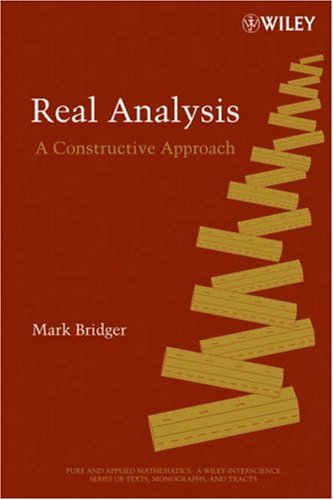

Most ebook files are in PDF format, so you can easily read them using various software such as Foxit Reader or directly on the Google Chrome browser.
Some ebook files are released by publishers in other formats such as .awz, .mobi, .epub, .fb2, etc. You may need to install specific software to read these formats on mobile/PC, such as Calibre.
Please read the tutorial at this link: https://ebookbell.com/faq
We offer FREE conversion to the popular formats you request; however, this may take some time. Therefore, right after payment, please email us, and we will try to provide the service as quickly as possible.
For some exceptional file formats or broken links (if any), please refrain from opening any disputes. Instead, email us first, and we will try to assist within a maximum of 6 hours.
EbookBell Team

0.0
0 reviewsA unique approach to analysis that lets you apply mathematics across a range of subjects
This innovative text sets forth a thoroughly rigorous modern account of the theoretical underpinnings of calculus: continuity, differentiability, and convergence. Using a constructive approach, every proof of every result is direct and ultimately computationally verifiable. In particular, existence is never established by showing that the assumption of non-existence leads to a contradiction. The ultimate consequence of this method is that it makes sense—not just to math majors but also to students from all branches of the sciences.
The text begins with a construction of the real numbers beginning with the rationals, using interval arithmetic. This introduces readers to the reasoning and proof-writing skills necessary for doing and communicating mathematics, and it sets the foundation for the rest of the text, which includes:
Early use of the Completeness Theorem to prove a helpful Inverse Function Theorem
Sequences, limits and series, and the careful derivation of formulas and estimates for important functions
Emphasis on uniform continuity and its consequences, such as boundedness and the extension of uniformly continuous functions from dense subsets
Construction of the Riemann integral for functions uniformly continuous on an interval, and its extension to improper integrals
Differentiation, emphasizing the derivative as a function rather than a pointwise limit
Properties of sequences and series of continuous and differentiable functions
Fourier series and an introduction to more advanced ideas in functional analysis
Examples throughout the text demonstrate the application of new concepts. Readers can test their own skills with problems and projects ranging in difficulty from basic to challenging.